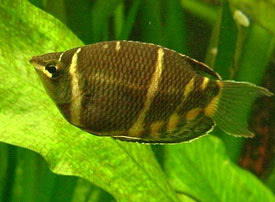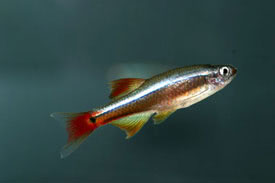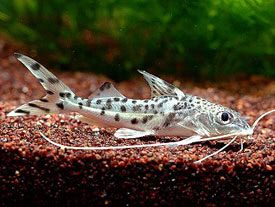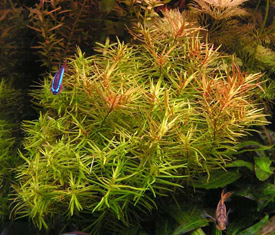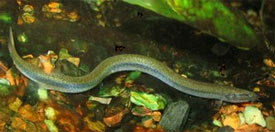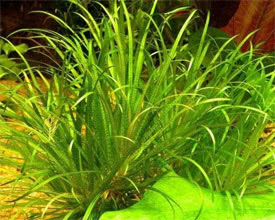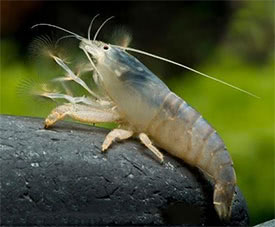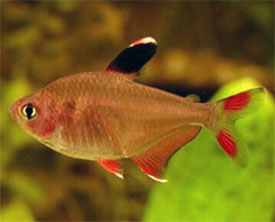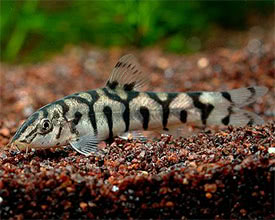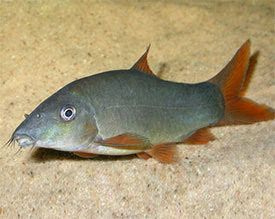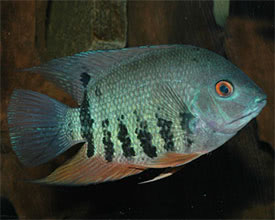
 Magyarul / Hungarian
Magyarul / Hungarian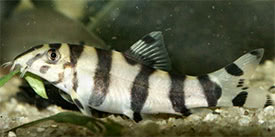
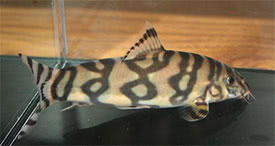
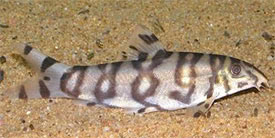
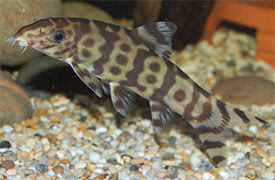

- Scientific name: Botia histrionica
- Synonyms: -
- Common name: Burmese Loach, Golden Zebra Loach, Silver Striped Loach
- Group: Loaches
- Habitat: Asia; India, China, Myanmar (Burma)
- Size: 11-13 cm
- Biotope: Found in the slow-flowing areas of forest-shaded, well-oxygenated mountain streams and smaller rivers, usually with sandy or rocky bottom.
- Social behavior: Quite peaceful loach that can be kept in a community or biotope tank, but shuldn’t be kept with too small fish, as they may be eaten. They will do well with other not too aggressive locahes in a very large aquarium. They should be kept in a small group, as when kept singly they can become aggressive.
- Diet: Omnivorous; in nature it mainly carnivorous and eats insects and their larvae. In the aquarium it can be fed with small live and frozen foods, and quality dried foods, plus some vegetable matter such as cucumber or spinach. It will eat small snails.
- Breeding: Unsuccessful in aquarium.
- Tank: Minimum 130 litres
- Population: 5-6 fish for 240 litres
- Decoration: Use sand or small gravel as substrate. Decorate the tank with lots of smooth, water-worn rocks and roots. The lighting shouldn’t be bright, and use plants that able to grow in such conditions like Microsorum pteropus or Taxiphyllum barbieri. Water movement can be moderately strong.
- Temperature: 22-28 °C
- pH: 6-7.5
- Hardness: 2-10 NK°
- Lifespan: 8-10 years
Description: Adult Botia histrionica have yellowish body with 5 vertical, broad bands that irregular in shape, each containing a small round spot at the lateral line and another at the back. The dorsal fin has one broad black band that interrupted in the middle. Pectoral-, ventral- and anal fins have two black bands. The tail fin also has two broad bands and a black tip to each fin-lobe. The adult fish patterning may depend on the geographical location of the fish, but young specimens all possess 5 solid dark bars on their flanks, and can be easily confused with Botia kubotai, however its horizontal dark bars are typically split at quite a young age. As the fish grow the body bars may break up to form irregular vertical markings, but on some form these bars remain solid. Some color forms of Burmese Loach have whitish body.
It is not extraordinary that during dominance battles or when new individuals added to an existing group, the fish lose of its body pattern and coloration (greying out). Another interesting behaviour in the group is that younger fish swim flank-to-flank with larger specimens, mimicking their every movement (shadowing). They are also able to make clicking sounds, usually when excited. Botia histrionica like to hide itself into small gaps, so do not use sharp edged or too small decorations in the aquarium, as the fish may become trapped. Golden Zebra Loach are often settle on their sides and this appears to be their natural resting behaviour.
Mature females have fuller body and grow a little larger, while adult males have elongated snouts with thickened lips. There are no reports about their breeding habits. In Southeast Asia like other loaches, Botia histrionica are being produced on a commercial basis via the use of hormones. Unfortunately this practice has been taken to a different level in recent years with a number of hybrids appearing on the market including a cross between a form of Botia histrionica and Chromobotia macracanthus.







